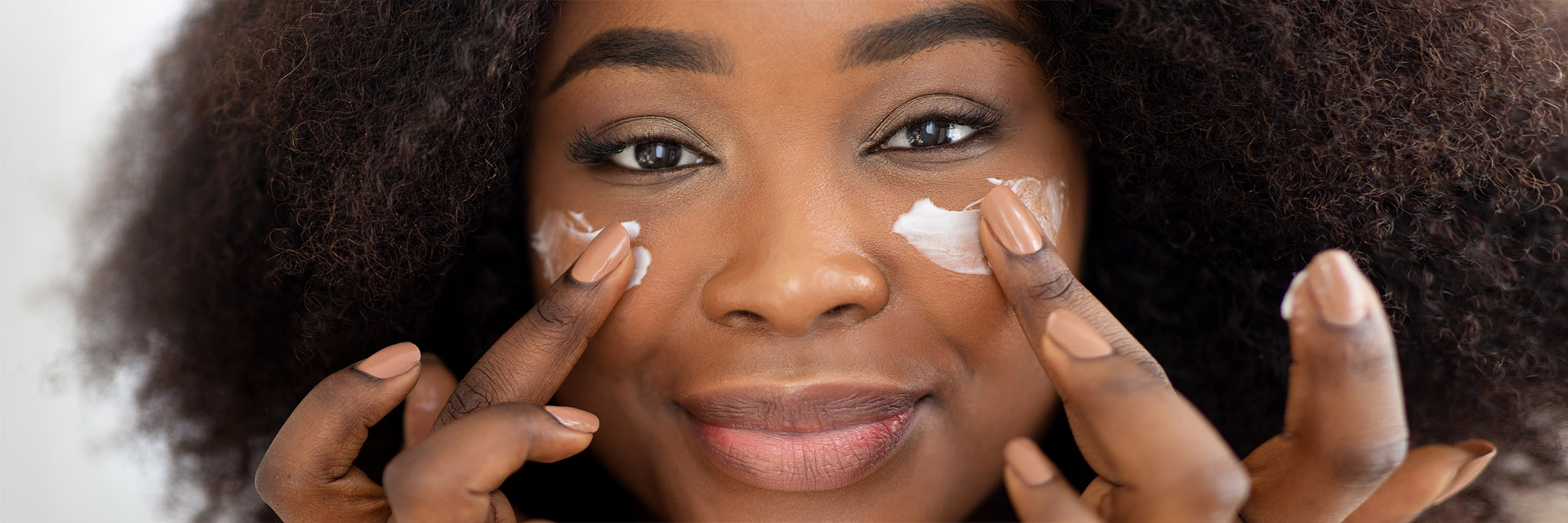Tinted sunscreens are having a moment, and it’s easy to see why. They combine sun protection with a lightweight, natural finish that can even out your skin tone and replace foundation. But here’s the catch: just like regular sunscreen, if you’re not applying tinted sunscreen the right way, you may not be getting the full protection promised on the label.
Many beauty influencers and skincare enthusiasts on social media are sharing their favorite tinted SPF products, but they’re often applying just a thin swipe or dot. While it might look flawless on camera, it could leave your skin under-protected in real life if you’re not covering your bases with a non-tinted sunscreen beforehand.
Here’s what you need to know to get the most out of your tinted sunscreen.
What Makes Tinted Sunscreen Different?
Unlike traditional sunscreens, tinted versions often include mineral filters like zinc oxide or titanium dioxide, along with added iron oxides. Iron oxides not only help create the tint but also offer extra protection against visible light, including blue light from your phone or computer. That’s important because research shows visible light has been shown to trigger or worsen melasma and post-inflammatory hyperpigmentation, especially in people with medium to deep skin tones.
If you have melasma or are prone to stubborn dark spots, tinted sunscreen can offer better daily protection than a regular non-tinted SPF. In fact, dermatologists often recommend tinted formulas specifically for people managing melasma because of the added visible light defense.
So yes, tinted sunscreen can be a powerful multitasker. But it only works if you’re using enough.
How Much Tinted Sunscreen Do You Really Need?
Here’s the science: in order to get the full SPF number on the label, you need to apply about 2 milligrams of sunscreen per square centimeter of skin.
For full protection, you need:
- About 1/4 teaspoon (or two full finger lengths) for your face alone
- The same amount for your neck
- Reapplication every two hours, or after sweating or swimming
If you're only applying a few dots and blending them out like a sheer foundation, you’re probably only getting a fraction of the labeled SPF — some estimates say as low as SPF 10 or less.
How to Apply Tinted Sunscreen Correctly
To make sure you’re getting proper protection, follow these tips:
- Start with Clean, Dry Skin
Make sure your face is clean and your moisturizer is fully absorbed. - Measure the Right Amount
Dispense a quarter-sized dollop (about 1/4 teaspoon or two fingers’ length) for your face. Don’t skimp, even if it feels like a lot. - Use Your Fingers
Apply with clean fingertips. This method ensures even coverage and helps maintain the SPF’s integrity — sponges and brushes can absorb product, reducing effectiveness. - Apply evenly: Don’t just dot and blend — make sure you’re spreading the product evenly over your entire face, including your hairline, jawline, ears, and neck.
- Don’t rely on mixing: Avoid diluting your tinted sunscreen by mixing it with moisturizers or foundations. This can lower its effectiveness.
- Layering is OK: If you want more coverage, let your sunscreen set for a few minutes, then go in with more or add a bit of concealer or foundation on top.
- Reapply: Just like traditional sunscreens, tinted SPF needs to be reapplied every two hours if you're outside, sweating, or wiping your face.
Pro Tips
- Layering: If you prefer lighter coverage, you can apply a regular (untinted) sunscreen first, let it dry, then layer tinted sunscreen or makeup on top. This ensures you’re getting enough SPF without your product looking too “cakey” or heavy.
- Shade Matching: Choose a tint that matches your skin tone for the best cosmetic result, but focus on coverage rather than just appearance.
- Sensitive Skin: Tinted mineral sunscreens are usually a good option for sensitive or acne-prone skin. Some formulas are “hybrids,” meaning they combine mineral and chemical filters. If your skin tends to react to chemical sunscreens — or you want to play it safe — check the ingredient list before buying. Also, watch for added fragrance if you’re sensitive to it.
Can Tinted Sunscreen Replace Foundation?
Yes — and no. Tinted sunscreens can give you sheer, skin-like coverage, but they’re designed for sun protection first. On the flip side, makeup products with SPF are made to provide coverage first, with sun protection as a bonus. If you want more coverage, it’s best to apply your tinted sunscreen first, then layer foundation or concealer on top. Keep in mind: most makeup with SPF doesn’t offer enough protection on its own, either because it doesn’t contain high enough SPF or because it’s not applied in the amount needed. According to the American Academy of Dermatology, sunscreen should always be your first line of defense.
If you’re unsure whether your sunscreen is giving you the protection you need, talk to a dermatologist or your health care provider. They can help you choose a formula that works for your skin type and make sure you’re using it to its full potential.
Need help finding a provider? Find a physician on staff with Texas Health, visit TexasHealth.org/Doctors.

